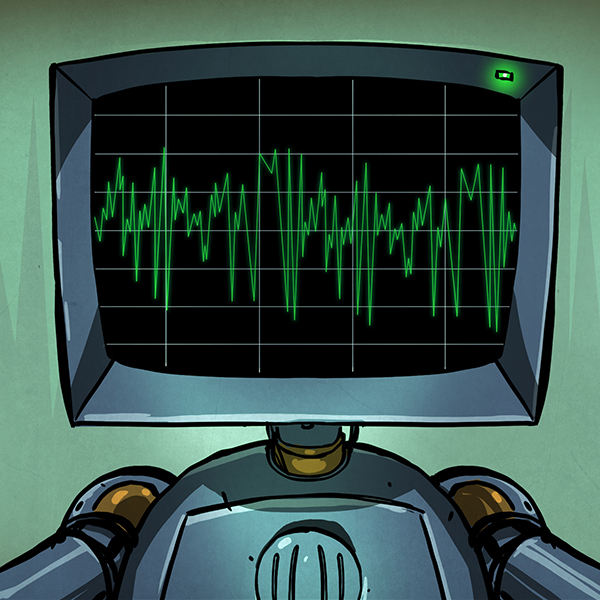This week, Jonathan Bennett and Aaron Newcomb chat with Simon Phipps and Stefano Maffulli about Open Source AI. Why did we need a new definition? Has it been controversial? And why did OSI step into this particular conversation?
Avian-Inspired Drones: How Studying Birds Of Prey Brings More Efficient Drones Closer

Throughout evolution, the concept of powered flight has evolved and refined itself multiple times across both dinosaurs (birds), mammals (bats) and insects. So why is it that our human-made flying machines are so unlike them? The field of nature-inspired flying drones is a lively one, but one that is filled with challenges. In a recent video on the Ziroth YouTube channel, [Ryan Inis] takes a look at these efforts, in particular those of EPFL, whose recent RAVEN drone we had a look at recently already.
Along with RAVEN, there is also another project (LisRaptor) based on the Northern Goshawk, a bird of prey seen in both Europe and North-America. While RAVEN mostly focused on the near-vertical take-off that smaller birds are capable of, this project studies the interactions between the bird’s wings and tail, and how these enable rapid changes to the bird’s flight trajectory and velocity, while maintaining efficiency.
The video provides a good overview of this project. Where the LisRaptor differs from the animal is in having a rudder and a propeller, but the former should ideally not be necessary. Obviously the kinematics behind controlled flight are not at all easy, and the researchers spent a lot of time running through configurations aided by machine learning to achieve the ideal – and most efficient – wing and tail configuration. As these prototypes progress, they may one day lead to drones that are hard to differentiate from birds and bats.
A Game Boy Speedometer, Just Because You Can
From a practical standpoint, [John] may be correct that his recent creation is the “world’s worst digital dash”, but we’re still oddly enamored with the idea of using a Nintendo Game Boy as a digital speedometer. Pulling it off meant interfacing the handheld with the vehicle’s CAN bus system, so whether you’re into retro gaming or car hacking, this project has something to offer.
Showing real-time vehicle speed on the Game Boy sounds like it should be relatively easy, but the iconic game system wasn’t exactly built for such a task. Its 2 MHz CPU and 160×144 pixel dot-matrix screen were every kid’s dream in 1989, but using it as a car dashboard is pushing it. To bridge that gap, [John] designed two custom circuit boards. One interfaces with the Game Boy, intercepting its memory requests and feeding it data from a microcontroller. The other processes the CAN bus signals, translating speed information into a form the Game Boy can display. [John] used inexpensive tools and software to read the CAN bus data, and used GBDK-2020 to write the software in C. His video goes in great detail on how to do this.
Months of work have gone into decoding the Game Boy’s data bus and creating a schematic for the interface board. Tricking the Game Boy into thinking it was loading a game, while actually displaying incoming speed data. The screen’s low resolution and slow refresh rate rendered it barely readable in a moving vehicle. But [John]’s goal wasn’t practicality — it was just proving it could be done.
Want to dive deep into the Game Boy? Have you seen the Ultimate Game Boy talk?
Continue reading “A Game Boy Speedometer, Just Because You Can”
No Ham License? Listen Anyway In Your Browser
Full disclosure: ham radio isn’t for everyone, and there are many different facets to it. What appeals to one person might bore another to death. One area of ham radio that has changed a lot in the last few years is more or less local and typically mobile operation on VHF or UHF. Not long ago, hams used HTs (walky-talkies or handi-talkies) or mobile radios via repeaters to talk to each other and — the golden prize back then — make phone calls from their cars. Cell phones have made that much less interesting, but there is still an active community of operators talking on repeaters. However, the traffic has gone digital, the Internet is involved, and people with inexpensive, low-powered radios can talk to each other across the globe. This is nothing new, of course. However, having digital services means that operators with special interests can congregate in what amounts to radio chat rooms organized by region or topic.
There’s a long history of people listening to ham radio conversations with shortwave radios, SDRs, and scanners. But with so much activity now carried on the Internet, you can listen in using nothing more than your web browser or a phone app. I’ll show you how. If you get interested enough, it is easy enough to get your license. You don’t need any Morse code anymore, and a simple Technician class license in the United States is all you need to get going.
A Quick DMR Primer
There are several digital ham networks around and like real networks, you can have different physical transport layers and then build on top of that. For the purposes of this post, I’m going to focus on DMR (digital mobile radio) on the Brandmeister network which is very large and popular ham network. You won’t need a license nor will you need to sign up for anything as long as you are content to just listen.
Continue reading “No Ham License? Listen Anyway In Your Browser”
Using The ESP8266 For Low-Cost Fault Injection
As a general concept, fault injection is a technique that studies how a system reacts to unusual or unexpected external forces. The idea is that, if you can trigger a glitch at the precise moment, you might be able to use that to your advantage in disabling security features or otherwise gaining further access to the device in question. In the hardware world, this could be achieved by fiddling with the power going into the device, or subjecting it to extreme temperatures.
We’ve covered voltage glitching attacks on these pages in the past, but most of the tools used are fairly expensive if you’re not doing this kind of thing professionally. Luckily for us, [Aditya Patil] has developed a fault injection tool that can run on a standard ESP8266 development board. Obviously it’s not as capable as a bespoke device costing hundreds of dollars, but if you just want to experiment with the concept, it’s a fantastic way to wrap your head around it all.
Continue reading “Using The ESP8266 For Low-Cost Fault Injection”
Nice PDF, But Can It Run DOOM? Yup!
DOOM is a classic game to implement on a variety of platforms, but doompdf by [ading2210] is one we didn’t see coming. It runs a bit slow and controls are a little awkward but it does run. Entirely within a PDF file, at that.
How is this possible? PDFs are technically capable of much more than just displaying static content, and support JavaScript with their own library of functions. Adobe Acrobat implements the full spec, but modern web browsers implement at least a subset of the functionality in a sandboxed JavaScript runtime environment. Input and output are limited to things one might expect from a fancy PDF form (text input boxes, clickable buttons, things of that nature) but computation-wise, just about anything goes.
Turning GLaDOS Into Ted: A Tale Of A Talking Toy
What if your old, neglected toys could come to life — with a bit of sass? That’s exactly what [Binh] achieved when he transformed his sister’s worn-out teddy bear into ‘Ted’, an interactive talking plush with a personality of its own. This project, which combines the GLaDOS Personality Core project from the Portal series with clever microcontroller tinkering, brings a whole new personality to a childhood favorite.
[Binh] started with the basics: a teddy bear already equipped with buttons and speakers, which he overhauled with an ESP32 microcontroller. The bear’s personality originated from GLaDOS, but was rewritten by [Binh] to fit a cheeky, teddy-bear tone. With a few tweaks in the Python-based fork, [Binh] created threads to handle touch-based interaction. For example, the ESP32 detects where the bear is touched and sends this input to a modified neural network, which then generates a response. The bear can, for instance, call you out for holding his paw for too long or sarcastically plead for mercy. I hear you say ‘but that bear Ted could do a lot more!’ Well — maybe, all this is just what an innocent bear with a personality should be capable of.
Instead, let us imagine future iterations featuring capacitive touch sensors or accelerometers to detect movement. The project is simple, but showcases the potential for intelligent plush toys. It might raise some questions, too.
Continue reading “Turning GLaDOS Into Ted: A Tale Of A Talking Toy”

















